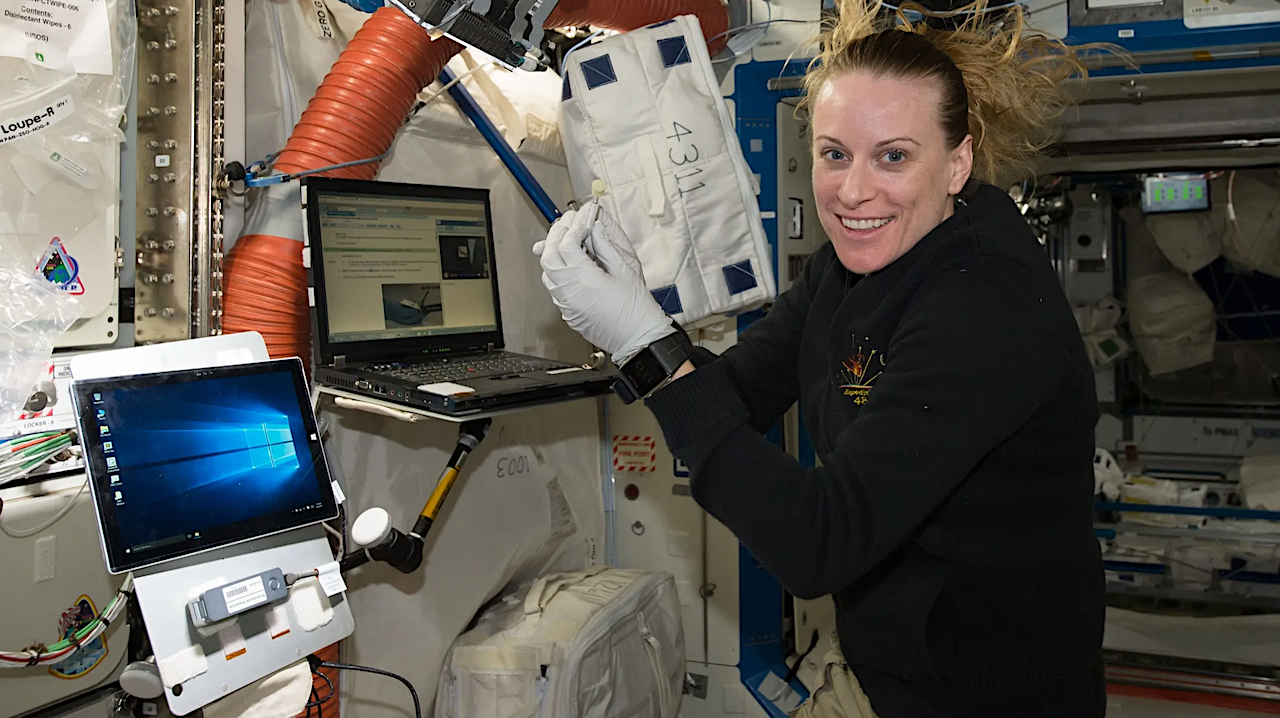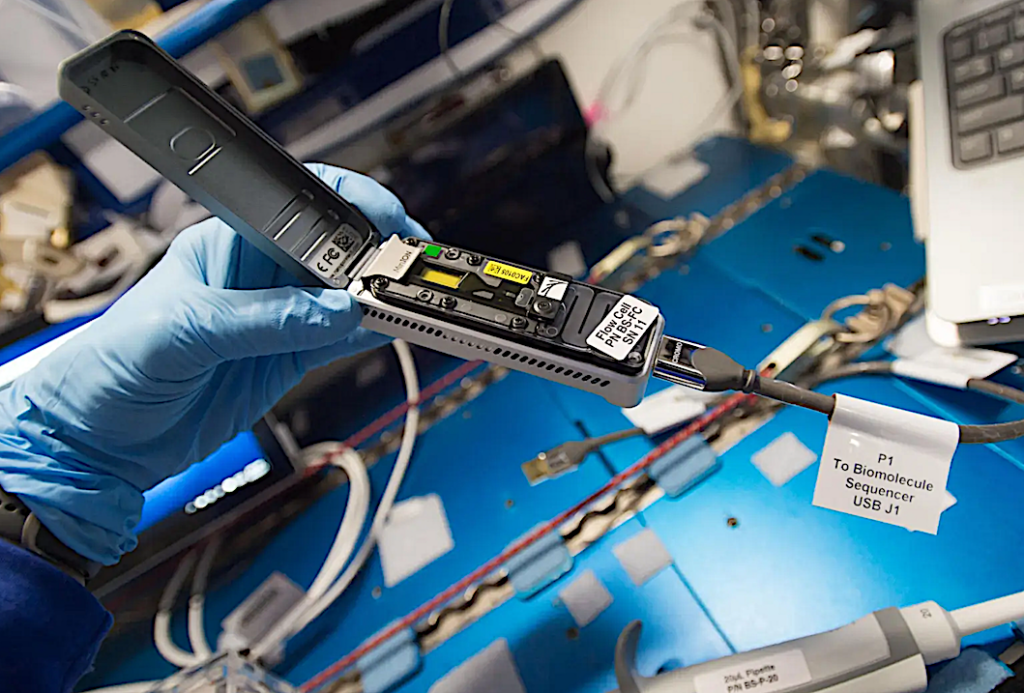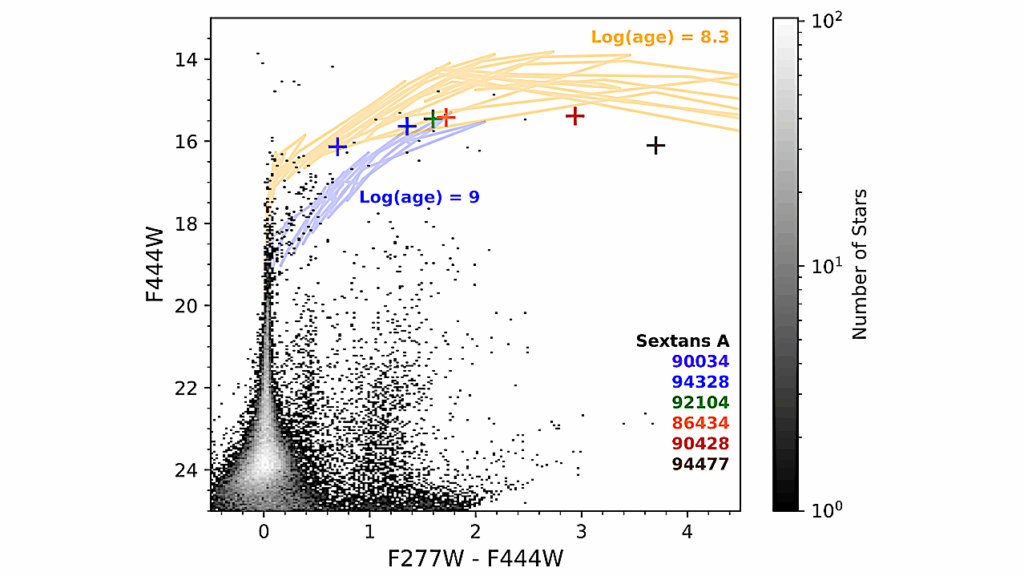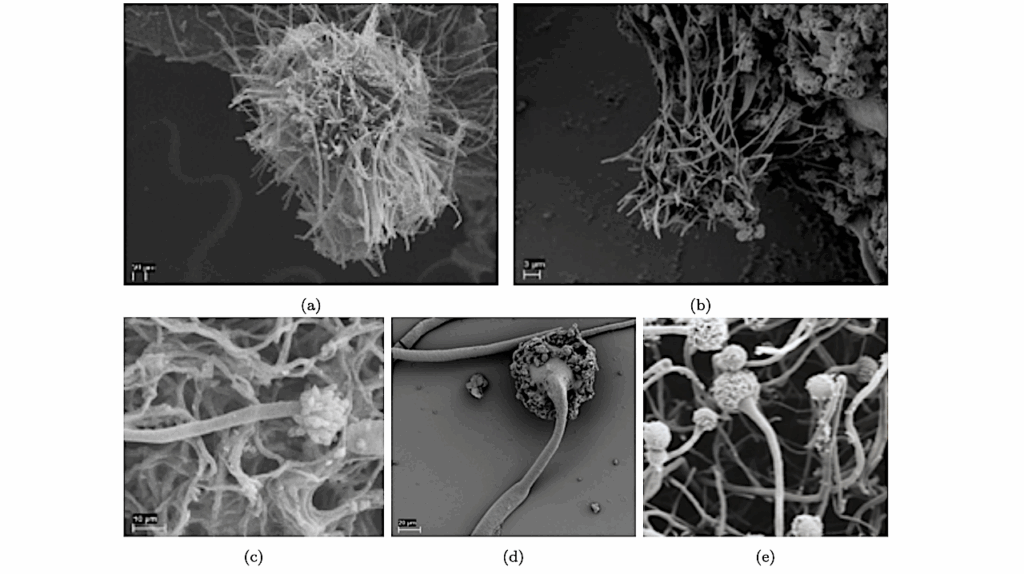Offworld Genomics Research On the ISS: Studying DNA in Space

Long-term space exploration exposes humans to radiation that can damage deoxyribonucleic acid or DNA, which carries the genetic information for our development and functioning. Conditions in space also affect the way the body repairs such damage, potentially compounding the risk. Research on the International Space Station studies DNA damage and repair using tools and techniques to sequence, analyze, and even edit DNA.

[Detail] NASA astronaut Kate Rubins prepares a run of Biomolecule Sequencer experiment, which sequenced DNA in space for the first time. NASA
Those tools and techniques have been developed especially for use in space, which has unique safety considerations and where there are limits on the size and weight of equipment. This specialization has made this type of research possible and resulted in significant milestones in DNA research.
Jan 29, 2021 — More than four years ago, NASA astronaut Kate Rubins became the first person to sequence DNA in space. This past week, she moved space science forward with another crucial milestone for microbiology aboard the International Space Station. The research team took a moment to recognize Rubins’ spot in scientific history. — NASA
In April 2016, ESA (European Space Agency) astronaut Tim Peake first amplified DNA using the first polymerase chain reaction (PCR) device sent to station, called miniPCR.1 An important step in the process of analyzing genetic material, amplification involves making multiple copies of a segment of DNA. NASA astronaut Kate Rubin sequenced DNA in space for the first time in August 2016 using a commercial off-the-shelf device called MinION.2 In August 2017, NASA astronaut Peggy Whitson combined the miniPCR and MinION to identify the first unknown microbe from the station, validating a process that could make possible in-flight identification of microbes and diagnosis of infectious diseases on future missions.3 In August 2018, NASA astronaut Ricky Arnold first used a “swab to sequencer” DNA sequencing method that eliminates the need to culture bacteria before analysis.4

NASA astronaut Ricky Arnold processes DNA from swabs of space station surfaces to identify microbes. — NASA
Another milestone, reached in May 2019, was the first CRISPR gene editing on station, performed by NASA astronaut Christina Koch.5 CRISPR stands for Clustered Regularly Interspaced Short Palindromic Repeats. These are short, repeated sequences of DNA noted in bacteria with viral DNA sequences in between them. Bacteria transcribe the viral DNA sequences to RNA, which then guides a specific protein to the viral DNA and cuts it – creating a line of defense against invading viruses. Researchers can create a guide RNA to be specific to any part of a genome. This means CRISPR can be used to create precise breaks in a known location of a gene, resulting in simplified gene editing.
A program called Genes in Space has employed these advances for multiple investigations. A collaboration between Boeing and miniPCR bio sponsored by the ISS National Lab and New England Biolabs, this program is a national contest where students in grades 7 through 12 design DNA analysis experiments for the space station.
Genes in Space-6 used CRISPR to successfully generate breaks in the DNA of a common yeast, allow for repair of the breaks, and sequence the patched-up DNA to determine whether its original order was restored, all during spaceflight.5 Performing the entire process in space – rather than causing a break, freezing the sample, and sending it into space to repair –provided researchers insight into the type of repair mechanism used. Organisms repair DNA breaks in one of two major ways. One method may add or delete bases while the other rejoins the strands without changing the DNA sequence. Understanding whether one type of repair is less error-prone has important implications for protecting crew members.

NASA astronaut Christina Koch works on the Genes in Space-6 experiment. — NASA
Genes in Space-5 represented an important step toward a rapid, safe, and cost-effective way to examine the immune system during spaceflight. This investigation also provided proof of concept for simultaneously amplifying multiple DNA sequences in space, expanding the possibilities for in-flight research and health monitoring.
Genes in Space-10 validated a method for measuring and analyzing the length of DNA fragments known as telomeres using fluorescence. Telomeres, cap-like genetic structures at the end of chromosomes that protect them from damage, shorten with age but have been found to lengthen in space. Analyzing telomere length could help determine the mechanism behind this effect. Results from the investigation also could provide a way to measure DNA and to diagnose genetic-based medical problems during spaceflight. Sending DNA samples back to Earth for analysis can cause the samples to degrade and is not feasible for future long-duration missions. Insight into why telomeres lengthen in space could lead to a better understanding of their role in human aging as well.

Former NASA astronaut Peggy Whitson works on the Genes In Space-3 experiment demonstrating ways in which portable, real-time DNA sequencing can be used to monitor crew health aboard the space station. — NASA
Having an entire molecular laboratory in space greatly increases what scientists can do. The ability to analyze DNA, study how it is damaged and repaired in space, and make specific changes to it enables more complex research. Identifying unknown organisms and changes in known ones is key to keeping crew members safe on future missions.
Citations
1 Boguraev, A. S. et al. Successful amplification of DNA aboard the International Space Station. NPJ Microgravity 3, 26, doi:10.1038/s41526-017-0033-9 (2017). (open access)
2 Castro-Wallace, S. L. et al. Nanopore DNA Sequencing and Genome Assembly on the International Space Station. Sci Rep 7, 18022, doi:10.1038/s41598-017-18364-0 (2017). (open access)
3 Burton, A. S. et al. Off Earth Identification of Bacterial Populations Using 16S rDNA Nanopore Sequencing. Genes (Basel) 11, doi:10.3390/genes11010076 (2020). (open access)
4 Stahl-Rommel, S. et al. Real-Time Culture-Independent Microbial Profiling Onboard the International Space Station Using Nanopore Sequencing. Genes (Basel) 12, doi:10.3390/genes12010106 (2021). (open access)
5 Stahl-Rommel, S. et al. A CRISPR-based assay for the study of eukaryotic DNA repair onboard the International Space Station. PloS one 16, e0253403, doi:10.1371/journal.pone.0253403 (2021). (open access)
Astrobiology, genomics,








